Hello friends, we continue in October sharing Latin American recipes in commemoration of October 12, the date of the discovery of America, an event that transformed our kitchens.
Today, I want to share with you a recipe of Peruvian gastronomy resulting from the fusion of Spanish gastronomy and the native ingredients of our continent like chili, potato, and pecan nut.
Hola amigos, seguimos en el mes de Octubre compartiendo recetas latinoamericanas en conmemoración al 12 de Octubre, fecha del descubrimiento de América, un evento que transformó nuestras cocinas.
El día de hoy quiero compartirles una receta de la gastronomía peruana resultado de la fusión de la gastronomía española y los ingredientes autóctonos de nuestro continente como el ají, la papa y la nuez pecana.
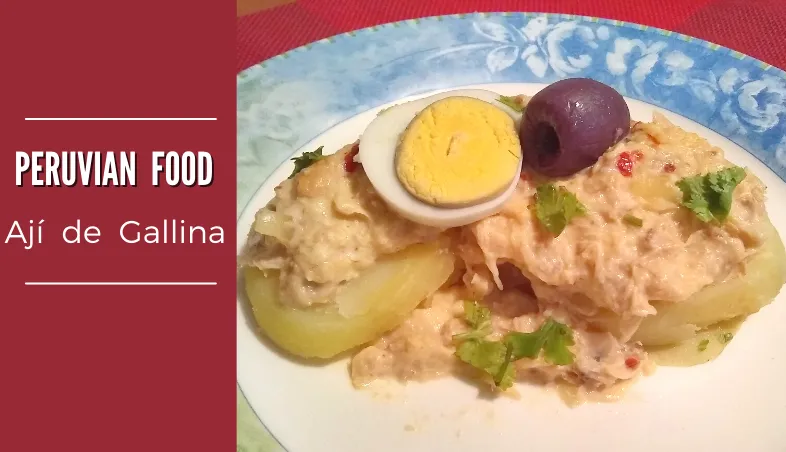

"Aji de gallina" is a dish consisting of shredded hen strips stewed in a sauce of onion and chili. It is thickened with bread crumbs soaked in milk. Its texture is similar to a cream sauce but with its texture is not uniform because you feel the strands of meat and onion pieces.
This dish has two emblematic ingredients like chicken and milk. Its predecessor dish is the "Manjar Blanc" typical of Catalonia (Spain) in the 14th century. This dish consisted of a kind of sweet pudding that had strands of chicken meat, almond milk and ground almonds, honey, rice flour, sugar water. When cooked, the rice starch gelled and compacted the mixture, so it had the consistency of a pudding. Some versions used walnuts instead of almonds. When the Spaniards arrived in America, they brought this dish with them. The local cook's incorporated regional ingredients and made countless variations of this Manjar Blac that gave rise to preparations such as milk soups like ajiaco, pisca andina, chupe, as well as the emblematic dessert arroz con leche and, of course, aji de gallina.
El Ají de gallina es un plato que consiste en tiras deshebradas de gallina guisadas en un sofrito de cebolla y ají. Es espesado con migas de pan remojadas en leche. Su textura es un similar a una salsa cremosa pero con una textura que no es uniforme ya que sientes las hebras de la carne y los trocitos de cebolla.
Este plato tiene dos ingredientes emblemáticos como son la gallina y la leche. Su plato predecesor es el Manjar Blanc típico de Cataluña (España) en el siglo XIV. Este plato consistía en una especie de pudín dulce que tenía hebras de carne de gallina, leche de almendras y molidas, miel, harina de arroz, agua de azhar. Al cocinarse el almidón del arroz gelificaba y compactaba la mezcla, por eso tenía la consitencia de un pudín. Algunas versiones usaban nueces en lugar de almendras. Al llegar los españoles a América, trajeron este plato. Los cocineros locales incorporaron ingredientes regionales e hicieron un sinfín de variantes de este Manjar Blac que dieron origen a preparaciones como las sopas con leche como ajiaco, pisca andina, chupe, así como el emblemático postre arroz con leche y el ají de gallina entre otros.

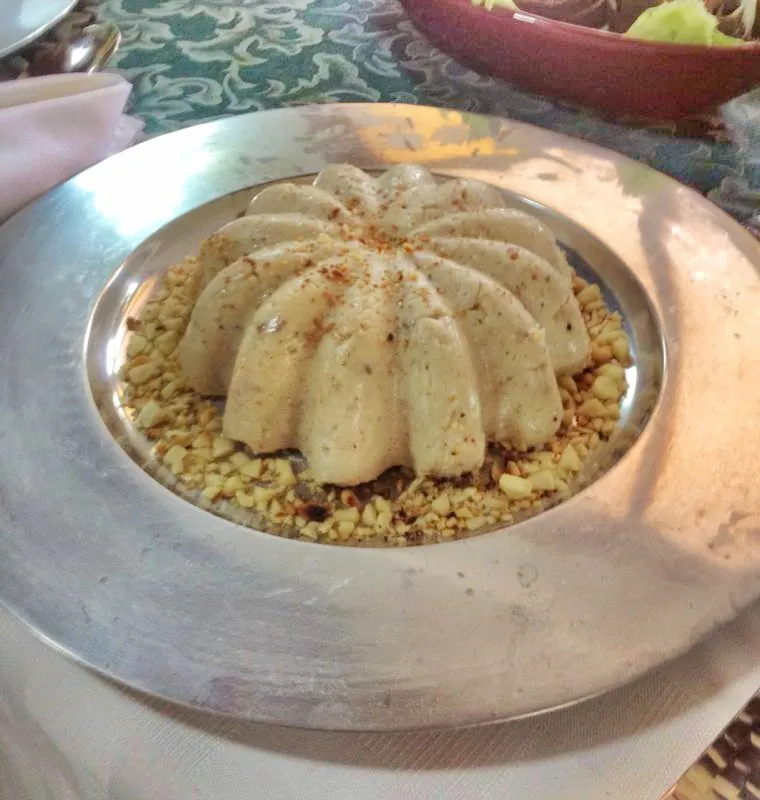

- 1 hen or chicken breast without the skin
- 2 medium onions chopped in strips
- 3 crushed garlic cloves
- 2 tablespoons of yellow chili paste
- 2 slices of chopped bread
- 2 cups evaporated milk
- 1 cup chicken or chicken broth
- 2 tablespoons ground walnuts
- 4 boiled potatoes
- 2 boiled eggs
- 2 tablespoons vegetable oil
- pitted black olives (kalamata)
- 1 pechuga sin piel de gallina o pollo
- 2 cebollas medianas picadas en tiras
- 3 dientes de ajo triturados
- 2 cucharadas de pasta de ají amarillo
- 2 rebanadas de pan picado
- 2 tazas de leche evaporada
- 1 taza de caldo de gallina o pollo
- 2 cucharadas de nuueces molidas
- 4 papas cocidas
- 2 huevos cocidos
- 2 cucharadas de aceite vegetal
- aceitunas negras (kalamata) sin hueso

The yellow chili paste is an elongated orange chili bell pepper. This gives the typical light yellow color to the preparation. This chili paste is made by liquefying the chili in a little oil. If you want it very hot, do not remove the seeds before blending them.
La pasta de ají amarillo se usa un ají que es alargado de color naranja. Este le dá el típico color amarillo claro a la preparación. Esta pasta de ají se realiza licuando el ají en un poco de aceite. Si lo quieres muy picante no le retires las semillas antes de licuarlo.
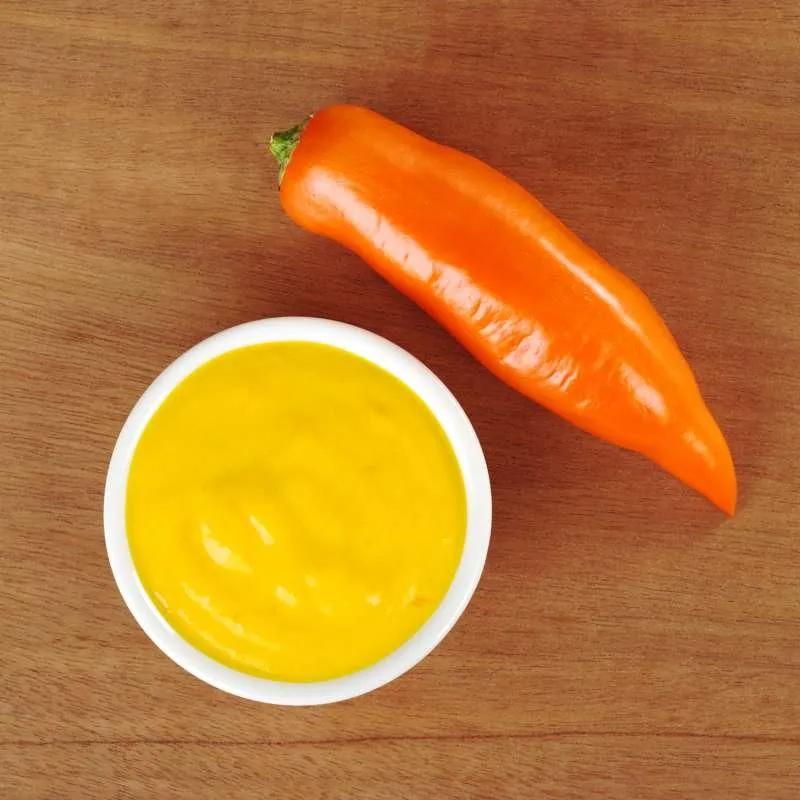
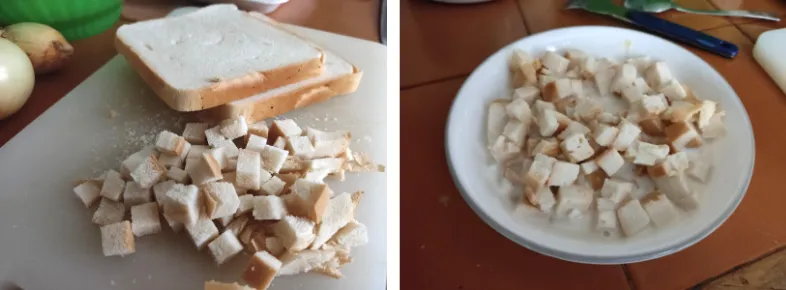

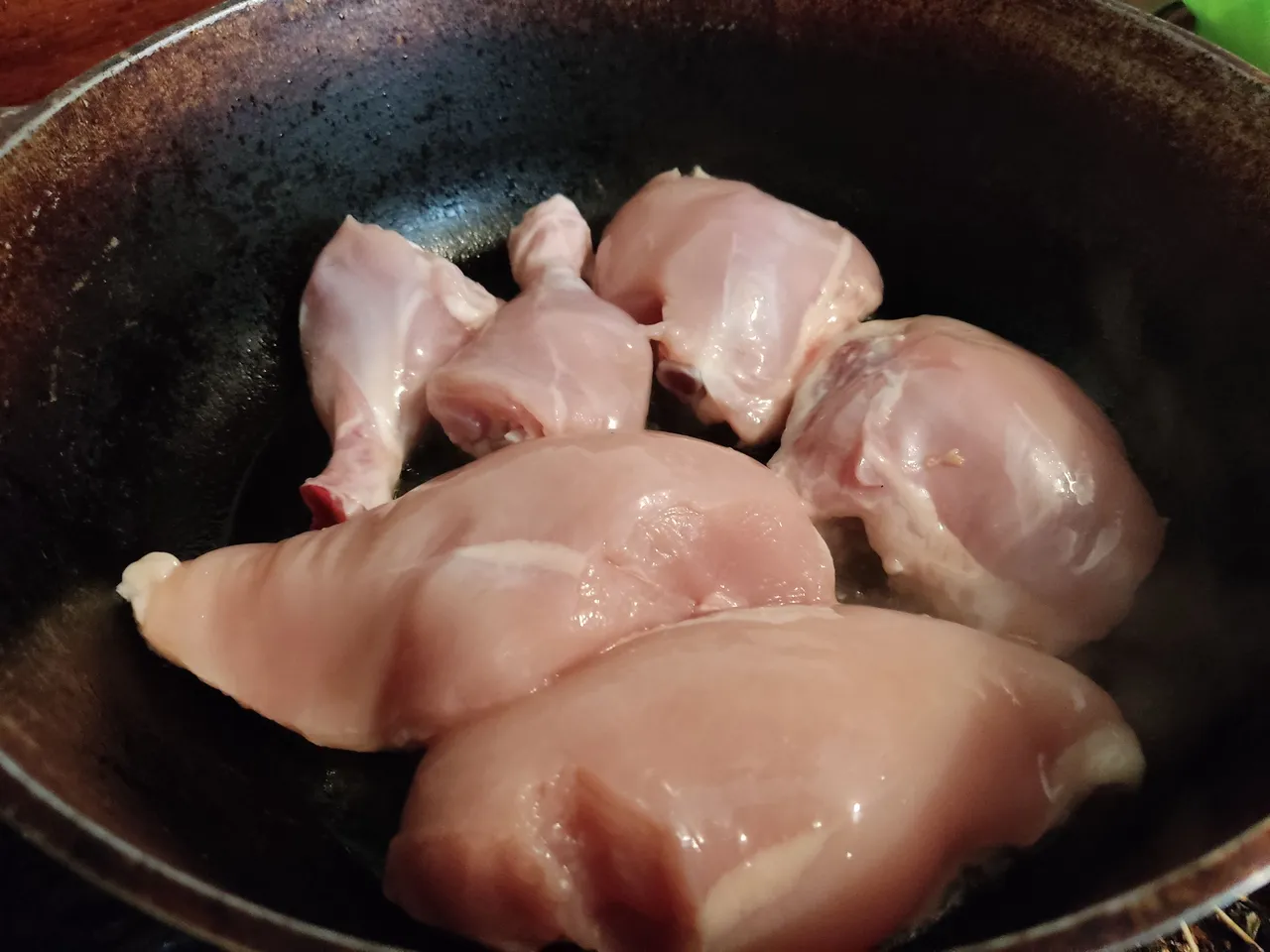

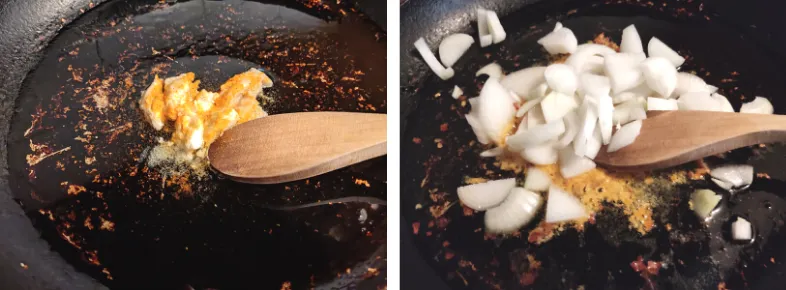

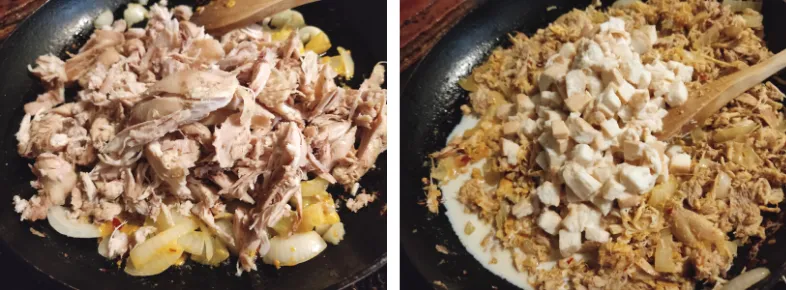


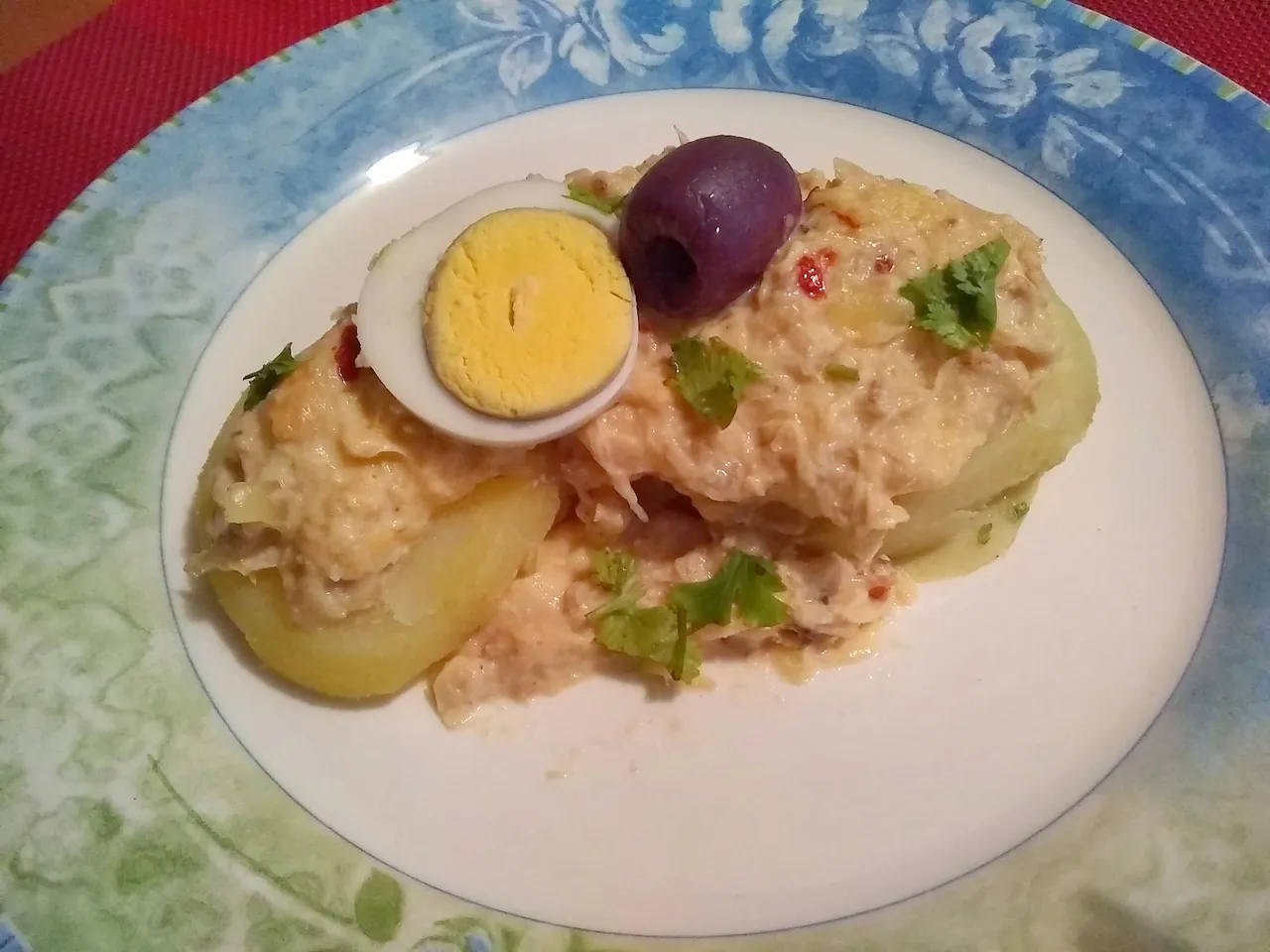

When you prepare this dish its flavor is spicy but with a sweet touch provided by the evaporated milk and nuts. It is a very subtle sweetness. When I close my eyes and perceive its flavors, it reminds me of a lot of the flavors of "pisca andina" but with a lot of spice.
I hope you have enjoyed this typical recipe of Peruvian gastronomy and that you will be able to prepare it sometime.
Cuando pruebas este plato su sabor es picante pero con un toque dulzón que le brinda la leche evaporada y las nueces. Es un dulce muy sutil. Cuando cierro los ojos y percibo sus sabores, me recuerda mucho a los sabores de una "pisca andina" pero con mucho picante.
Espero hayas disfrutado esta receta típica de la gastronomía peruana y puedas animarte a prepararla en alguna oportunidad.
Gracias por leerme. ¡Nos vemos en una próxima publicación!


